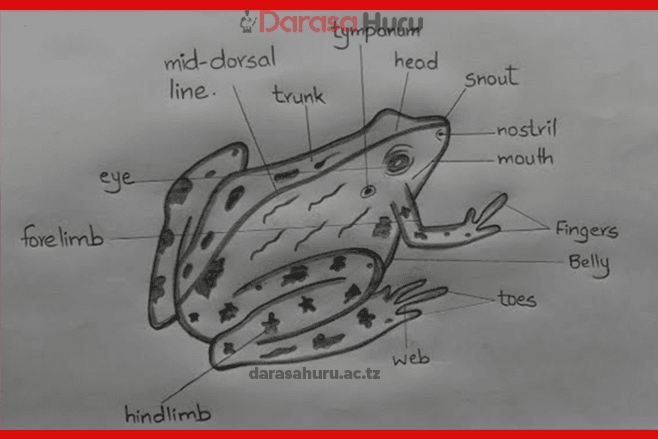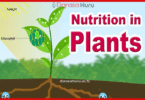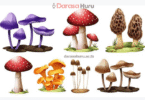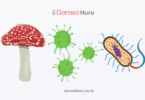Kingdom Animalia Classes, Advantages and Disadvantages
Kingdom Animalia constitutes all animals. Amongst the five kingdoms, the largest kingdom is the animal kingdom. Animals are multicellular eukaryotes.
Task 9
Read from reliable internet sources and biology books the information about kingdom Animalia.
Kingdom Animalia comprises wide varieties of animals. Animals vary greatly in their structure, morphology and the way their bodies function. Kingdom Animalia includes worms, insects, and higher animals. They are found in various habitats, such as on land, in oceans, and in freshwater.

General characteristics of animals
(a) They are eukaryotes; therefore, they possess a clearly defined nucleus and their cells have membrane bound organelles.
(b) They are multicellular, that means they are made up of more than one cell.
(c) They depend on other organisms as a source of their food.
(d) Most animals are mobile and hence they can move from one place to another searching for shelter, food, mates, and safety.
(e) Most of the animals have bilateral symmetrical bodies. This means that their bodies can be divided longitudinally into two equal parts.
(f) Most of the animals have high level of tissue differentiation and specialised body organs.
(g) Most of the animals have a well-developed nervous system.
(h) Most of the animals have anterior and posterior ends, with oral and anal openings.
(i) The majority of the animals digest food internally in the gut and store carbohydrates in the form of glycogen.
Distinctive features of animals
(a) They depend on other organisms as source of food.
(b) Most animals digest food internally in the gut.
(c) Most animals are capable of locomotion; hence they can move from one place to another. Few animals, such as oysters are sessile. They are found attached on rocks and other hard surfaces. They are not capable of self-locomotion.
(d) Most animals have a well-developed nervous system that helps them in detecting changes in their surroundings. This allows them to be aware of the changes occurring in their environment.
Activity 11
Differentiating animals from other organisms
Materials
A variety of plants and animals, charts showing a variety of plants and animals, notebook, and pen or pencil
Procedure
1. Walk around the school compound and observe a variety of plants, insects, and other animals or observe charts that show a variety of plants and animals.
2. Observe the organisms and note as many observable features as possible.
3. Group the observed organisms according to their similarities and differences.
4. Outline the similarities and differences among the grouped organisms.
Question
Give reasons why animals and plants are placed in different kingdoms.
Phyla of the kingdom Animalia
Kingdom Animalia comprises several phyla. However, only five phyla will be covered in this section. These are:
(a) Phylum Platyhelminthes includes pork tapeworm (Taenia solium), beef tapeworm (Taenia saginata), liver flukes (Fasciola species), blood flukes (Schistosoma species) and planaria.
(b) Phylum Nematoda, formerly known as Aschelminthes, includes ascaris, hookworms and filarial worms.
(c) Phylum Annelida includes earthworms, leeches and their marine relatives, such as ragworms and lugworms.
(d) Phylum Arthropoda includes prawns, crabs, ticks, spiders, butterflies and cockroaches.
(e) Phylum Chordata includes advanced organisms, such as human beings, cattle, fish, chicken, frogs and snakes.
Phylum Platyhelminthes
Task 10
From reliable internet sources, library and biology books read the examples of flatworms and their characteristics.
Members of the phylum Platyhelminthes are the flatworms and are commonly called platyhelminths. They can be free living or parasites. Figure 5.26 shows examples of platyhelminths.



Activity 12
Observing the external features of the flatworms
Materials
Preserved specimens of tapeworm, liver fluke, petri dishes, forceps, hand lens, notebook and pencil
Procedure
1. Using forceps pick a liver fluke, and tapeworm from preserving containers and put each in different petri dishes.
2. Using a hand lens, carefully observe and identify the following external structures (if any): the mouth, suckers, body shape and the posterior region of the organism.
3. Describe each specimen.
Question
1. How does the body structure of a tapeworm differ from that of a liver fluke?
2. What is the function of suckers in platyhelminths?

General characteristics of platyhelminths
(a) They have dorso-ventrally flattened bodies. This is the reason why they are called flatworms.
(b) Most flatworms have only one opening that is the mouth. However, tapeworms lack both mouth and anus.
(c) They have no body cavity. A body cavity is a space in an organism which holds and protects internal organs.
(d) Some members have hooks and suckers for attachment to the host. Such members include tapeworms and the liver fluke. See Figure 5.27.
(e) Some flatworms, such as planaria have hair-like structure called cilia on their outer body surface for locomotion.
(f) Few members, such as planaria are free living and inhabit freshwater, marine water and land. Most of its members, such as liver flukes and tapeworms are parasitic.
(g) They have specialised cells for excretion and osmoregulation called flame cells.
(h) They lack respiratory and circulatory systems. Transportation of oxygen for respiration and other materials takes place by simple diffusion.
(i) Their bodies are bilaterally symmetrical. This means their bodies can be divided longitudinally into two equal parts.
(j) They are hermaphrodites, meaning that they have both male and female reproductive organs. Hence, their reproduction can either be through self-fertilisation or cross-fertilisation.
(k) They are heterotrophic, meaning that they get food from other organisms. Flatworms may be parasites, predators or scavengers.

Distinctive features of platyhelminths
(a) They are dorso-ventrally flattened with ribbon or leaf-like body.
(b) If present, their digestive system is incomplete. The digestive tract has only a single opening which is the mouth.
(c) They have specialised cells for excretion and osmoregulation called flame cells.
(d) They have suckers, hooks, or both for attachment to the host.
Advantages of platyhelminths
(a) Some flatworms, such as planaria are scavengers, feeding on organic particles from dead bodies of other organisms.
(b) Some are used as biological specimens in the field of education and medicine. Examples of such flatworms include tapeworms and liver flukes.
Disadvantages of platyhelminths
Task 11
Search from reliable internet sources the videos or images showing beef or pork infected with tapeworms. Note down what you have observed.
(a) Many species are parasites that cause diseases to humans, livestock and wild animals. For example:
(i) Tapeworm causes taeniasis, which is an intestinal tapeworm infection transmitted through consuming raw or undercooked beef or pork infected with tapeworms. The infection caused by larval stages of tapeworms can lead to heart attack or epilepsy. If the infection is located in the heart muscles it can cause heart attack and if it is located in the brain, it can cause epilepsy.
(ii) Liver fluke causes fascioliasis. This disease causes liver rot in sheep, cattle and humans.
(iii) Some species of blood flukes, such as Schistosoma spp. Cause bilharzia (schistosomiasis). If untreated it may cause urinary bladder cancer or intestinal cancer.
(b) Parasitic flatworms can cause reduction in quality and amount of meat and milk produced by livestock due to infections. They can also cause stunted growth and even death in young animals.
(c) They cause general body weakness and frequent hunger in the hosts as they feed on digested nutrients from the hosts. Working animals, such as oxen cannot perform work to their full capacity if infected with a large number of parasitic flatworms.
(d) Parasitic flatworms can also cause loss of income due to costs incurred for treatment of diseases.

Exercise 6
1. Describe the distinctive features of members of phylum Platyhelminthes.
2. Imagine you are conducting a laboratory investigation. In one of your experiments, you come across a specimen of a tapeworm. What features will enable you to tell whether the specimen is a tapeworm?
3. Why is it not advisable to eat raw or undercooked beef?
Phylum Nematoda
Task 12
Search from reliable internet sources the videos or images that show round worms
Phylum Nematoda comprises round worms which are among the most numerous multicellular animals on the earth. They inhabit a wide range of environments, including soil, marine and freshwater. Examples of nematodes include the animal parasites, such as ascaris and plant parasites, such as eelworms.

General characteristics of nematodes
(a) They have round, cylindrical, elongated and unsegmented bodies with pointed ends.
(b) They depend on other organisms as source of food.
(c) They have no blood circulatory system; therefore, transport is by simple diffusion through the thin moist cuticle or through the fluid-filled body cavity.
(d) Many species of nematodes are parasites of both animals and plants, but there are also many free-living species found in marine and freshwater sediments and in the soil.
(e) They are dioecious with separate sexes. Males are usually smaller than females.

Distinctive features of nematodes
The following features differentiate nematodes from other animals.
(a) They have a cylindrical, elongated and unsegmented body with pointed ends.
(b) They have special sensory structures known as amphids and phasmids.
Activity 13
Observing external features of roundworms
Materials
Preserved specimen of ascaris (female and male), hand lens, forceps, notebook, pen and two petri dishes
Procedure
1. Use forceps to pick up male and female specimens of ascaris from a preserving container and put them into separate petri dishes.
2. Carefully observe the male and female ascaris specimens with a hand lens.
3. Describe their external features. Compare the observed features with those depicted in Figure 5.29.
Question
What features distinguish roundworms from flatworms?


Advantages of nematodes
(a) Nematodes have been used in various biological studies. For example, some discoveries in the field of genetics involved the use of nematodes.
(b) Some nematodes are used as biological control agents to control pests, such as locusts and vectors, such as mosquitoes. Parasitic roundworms attack and eat varieties of caterpillars.
(c) Soil nematodes are important in recycling of nutrients, hence contributing to soil fertility.
Disadvantages of nematodes
Task 13
Search from reliable internet sources the videos or images that show elephantiasis. Note down what you have observed.
(a) They cause diseases, such as elephantiasis or bancroftian filariasis which affects the human lymphatic system. This results in accumulation of the lymph in legs, hands, mammary glands or scrotal sacs.
(b) They cause ascariasis in humans and pigs. This may lead to obstruction of the gut and may also cause anaemia.
(c) Some species of roundworms cause root knot galls in plants, hence drains photosynthetic products.

Phylum Annelida
The word Annelid is derived from a latin word “annelus” which means little ring. Thus, members of this phylum are known as ringed or segmented worms. Annelida is a large phylum comprising ragworms, peacock worms, leeches, and earthworms. Examples of annelids are shown in Figure below




General characteristics of annelids
(a) They have elongated, cylindrical bodies that are divided into distinct segments.
(b) They have bilateral symmetrical bodies.
(c) They reproduce both asexually and sexually.
(d) They have a moist outer covering called cuticle.
(e) They have closed circulatory system whereby the blood flows within the blood vessels.
(f) They have a lip-like extension on the first segment above the mouth called prostomium.
(g) They are commonly found in soil, freshwater, and marine environment while some species are parasitic.

Distinctive features of annelids
(a) Most annelids have hair-like structures called chaetae made up of chitin. These are used for locomotion.
(b) They have a segmented body.
Activity 14
Observing external features of the earthworm
Materials
Preserved or live specimen of earthworm, hand lens, petri dish, notebook, pencil, and forceps
Procedure
1. Using forceps, pick an earthworm from a preserving container and put it in a petri dish.
2. Using a hand lens, observe the specimen carefully to identify its external features.
3. Identify its external features, including its mouth, anus, clitellum, and chaeta. Compare the observed features with those depicted in Figure 5.31.
Question
(a) How are the earthworms adapted to their environment?
(b) Explain two features that distinguish earthworms from round worms.


Advantages of annelids
(a) Some annelids improve soil aeration through burrowing and mixing up of soil layers. Earthworms play important role in improving soil aeration, hence maintaining soil fertility.
(b) They are used for commercial production of compost manure in the process known as vermicomposting.
(c) Some annelids are used as bait in the fishing industry. Examples of annelids used as bait include earthworms and lugworms.
(d) They are used as source of nutritious food for some fish and birds. They are rich in proteins and vitamins.
(e) Some annelids are ecological decomposers; hence, they contribute to nutrient circulation in the ecosystems.
(f) They remove pollutants from the soil and clean the environment by transforming organic wastes during feeding.
(g) Faeces and urine of some annelids have considerable value as manure and they increase soil fertility.
(h) They are used as specimens in biological studies.
(i) The excretory waste of some annelids which are in the form of cast increases sticking together of soil particles. This in turn increases water holding capacity of the soil.

Disadvantages of annelids
(a) Some annelids damage young roots of the growing plants.
(b) Leeches are harmful to mammals, reptiles and fishes, because they suck blood from them.
(c) Earthworms can increase soil porosity and aeration which may cause water loss by seepage from the farms.

Exercise 7
1. What morphological features differentiate earthworms from tapeworms?
2. What is the function of chaeta found in most annelids?
3. Imagine you are walking around school farm and you come across someone who is killing earthworms. Educate that person the importance of earthworms.
Phylum Arthropoda
The term Arthropoda originates from two Greek words, “arthron” meaning joint and “podos” meaning foot. Literally, arthropods are organisms with jointed appendages. Arthropods are the most successful animals on the earth.
They are found almost in every habitat, including marine, freshwater, and terrestrial habitats. They vary widely in their habitats and feeding habits. Examples of arthropods include prawn, scorpion, tick, beetle, butterfly, crab, spider, centipede, millipede and grasshopper, as shown in Figure below








General characteristics of arthropods
(a) They have exoskeleton made up mostly of chitin. The exoskeleton serves different purposes, such as muscles attachment, support and protection against physical damage.
(b) Some arthropods grow by periodically shedding off their exoskeleton in a process called moulting or ecdysis.
(c) They have segmented bodies. In most arthropods, the body is organised into three major regions. These regions are the head, thorax and abdomen. In some arthropods, such as arachnids and crustaceans, the thorax and head are fused together to form the cephalothorax. Therefore, these arthropods have two major body parts, namely cephalothorax and abdomen.
(d) They have jointed and paired appendages that may be modified in various ways to form structures, such as antennae, mouthparts, legs and reproductive organs. The modified appendages are used for various functions, such as feeding, gaseous exchange, locomotion and sensation.
(e) Their body plan is bilaterally symmetrical. This means, their bodies can be divided longitudinally into two equal parts through a central axis.
(f) They have compound or simple eyes.
(g) They have open circulatory system where blood is not confined to the blood vessels and heart only. Blood flows into the body cavity to reach various tissues and organs.
Distinctive features of arthropods
(a) They have jointed appendages which serve different purposes, such as feeding, locomotion and sensation.
(b) They have segmented bodies organised into regions called tagmata.
(c) They have an exoskeleton made up of mostly of chitin.
Classes of phylum Arthropoda
Task 14
Search from the library and reliable internet sources the information on classes of phylum Arthropoda, then make short notes.
Based on the presence of antennae, position and numbers of appendages, habitats, life histories and habits, arthropods are classified into five classes. These are class Crustacea which includes crabs and lobsters; class Arachnida which includes spiders and scorpions; class Chilopoda which includes centipedes; class Diplopoda which includes millipedes; and class Insecta which includes cockroaches, termites, and grasshoppers.
Activity 15
Observing the external structure of crab, spider, grasshopper, and millipede
Materials
Preserved specimens or pictures of crab, spider, grasshopper, and millipede, notebook, pen and hand lens
Procedure
1. Using forceps, pick specimens from a preserving container and put them in a petri dish.
2. Using a hand lens, observe the specimens carefully to identify their external features.
Question
(a) List down two observable features which show that these specimens are arthropods.
(b) What two external features that distinguish a spider from a grasshopper?

Advantage of arthropods
(a) They are used as food for human beings and other animals. They are rich in protein and calcium minerals. Example of edible arthropods are lobsters, prawns, shrimps, edible grasshopper, and larvae of beetles and butterflies.
(b) They are used for production of various substances. For example, honey bees produce honey, wax and bee venom; silk worms produce silk that can be used for commercial purpose; and silk from spiders is used to produce surgical threads.
(c) They are used in biological control of pests. Some arthropods have been used effectively as predators to kill or control pests. For example, lady beetles are used to kill aphids. Aphids are the insect pests that transmit viruses to plants.
(d) Insects, such as bees and butterflies are useful in agriculture as they act as pollinators. Many plants depend on insects for pollination.
(e) They are used in scientific researches particularly in the fields of physiology, genetics and evolution. Fruit flies (Drosophila melanogaster) are among the insects used for this purpose.
(f) Some insects are used in the production of medicine. Such insects include blister beetles that produce cantharidin which is used for treatment of urinogenital diseases.
(g) Some arthropods are scavengers and feed on rotten or decayed materials, hence helping in reducing wastes and ensuring nutrient circulation in the ecosystem. Examples of such arthropods are millipede and cockroaches.
(h) Some arthropods improve soil aeration and soil fertility. For example, termites break down plant tissues and diplopods feed on decaying plants and animals, thus improving soil fertility.
(i) Some crustaceans are used for decoration purpose especially crabs and crayfish.
(j) Some arachnids, such as mites play an important role in the formation of humus from decomposed leaf litter and wood.
Disadvantages of arthropods
(a) Chilopods, such as centipedes have venomous claws. They can bite humans and other animals causing pain, small wounds and blisters.
(b) Some arthropods destroy crops and other properties. For example, burrowing diplopods can cause some damage to the roots or germinating seeds, mites attack food crops (on farm and in storage) and timber.
(c) Some arthropods, such as scorpion, wasps and bees can cause painful bites and stings. Stinging insects that live in colonies can cause significant injury and even death.
(d) Some insects are vectors of animal and plant diseases. For example, mosquitoes carry Plasmodium spp. which cause malaria and tsetse flies carry Trypanosoma spp. which cause sleeping sickness to human beings. In addition, white flies carry tomato yellow leaf curl virus which causes chlorosis in plants.
(e) Some arthropods are parasites to mammals and other vertebrates. For examples ticks, jiggers, and bedbugs.
Phylum Chordata
This phylum comprises animals with a high degree of body organisation. The majority of animals under this phylum have a supporting column of bones known as backbone or vertebral column. Examples of chordates are shown in Figure below



Activity 16
Observing the external features of fish, chicken, frog, lizard and rat or mouse
Materials
Preserved or fresh specimens of fish, frog, chicken, catfish, lizard, rat, charts showing pictures or drawing of fish, frog, chicken, lizard, rat, hand lens, scalpels, notebook, pen and a tray
Procedure
1. Place each specimen on a tray.
2. Observe each specimen carefully.
3. Describe the external features you observed, including the arrangement of scales, presence of gills, type of fins, and the overall shape of each specimen.
Question
What features distinguish a fish from a frog?

General characteristics of chordates
(a) They occupy both terrestrial and aquatic habitats.
(b) Most chordates have a complete digestive system with two openings, the mouth and anus.
(c) Most chordates have a ventral heart.
(d) Most chordates have a closed circulatory system.
(e) Most have endoskeletons made up of bones and cartilages.
(f) Some chordates have central nervous system made up of the well-developed brain and a spinal cord.
Distinctive features of chordates
Chordates have unique features that differentiate them from other animals. Chordates have the following features at some stages of embryological development.
(a) A supporting skeletal structure called notochord. In many vertebrates, the notochord is replaced by the vertebral column during development.
(b) A dorsal hollow tubular nervous tissue known as nerve cord that is found inside vertebral column.
(c) Gill slits at least during early developmental stages and may later develop into various structures, such as gills in fish or component of the ear and throat in mammals.
(d) Post anal tail. In humans it is only present during embryonic stages.
Advantages of chordates
(a) Chordates, such as fish, chicken, goats, sheep, cattle and buffalo are used as source of food to human beings and other animals.
(b) Their excreta in the form of faeces or dung are used as organic manure which adds nutrients to the soil, thus improving soil fertility.
(c) Products from mammals have commercial value as they are used in making different products used by human beings. For example, cattle, sheep and goats provide skin which is used for making leather in tannery industries. Leather is used to make belts, bags, shoes and clothes. Many mammals provide horns and hooves which are used for making buttons and ornaments. The bones of mammals are ingredients used in making chicken feed. Sheep provide wool that is used for production of various products, including clothes.
(d) Some chordates, such as rats (rodents) are used in scientific research. They are trained to detect narcotics at the airports and landmines. They are also used to detect explosives buried underground during the war. They are also used to diagnose diseases such as, tuberculosis. Police dogs are used to track down criminals.
(e) Some domestic mammals, such as cattle and donkeys are trained to perform different duties, such as cultivation of crops and transportation of goods.
(f) Some chordates are source of income. Live animals and animal product such as meat and milk are sold in domestic and foreign markets; hence, they are an important source of local and foreign currency. Some animals are kept in zoos, national parks and game reserves to attract tourists.
(g) Their excreta are used for production of biogas which is used as a source of energy.
(h) Chordate derived products such as fish oil and shark collagen are used to treat diseases in human beings and livestock. Snake skin, tortoise shell and shark fins are used in traditional medicine.
Disadvantages of chordates
(a) Some chordates are dangerous because they can attack humans, causing injury or death. Examples of such chordates include crocodiles, sharks, lions, leopards, buffalo, elephants and hyenas.
(b) Some chordates are vectors of diseases. For example, birds can transmit viruses that cause bird flu. Cats and rats can spread fleas which transmit bacteria and other pathogens that cause diseases, such as plague. Infected dogs can also transmit rabies, which is a viral disease of dogs and can also infect humans.
(c) Some chordates are crop pests, destroying crops in storage or in the field. Examples of such chordates include birds, rats, monkeys, and pigs.
(d) Some snakes, frogs, toads and newts produce toxins which cause skin irritation and even death to human beings.











